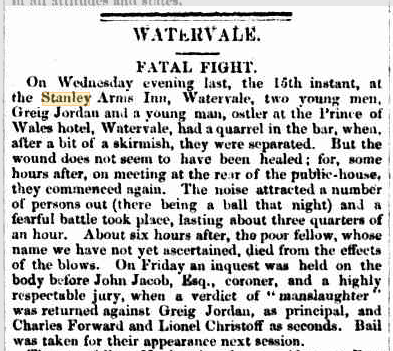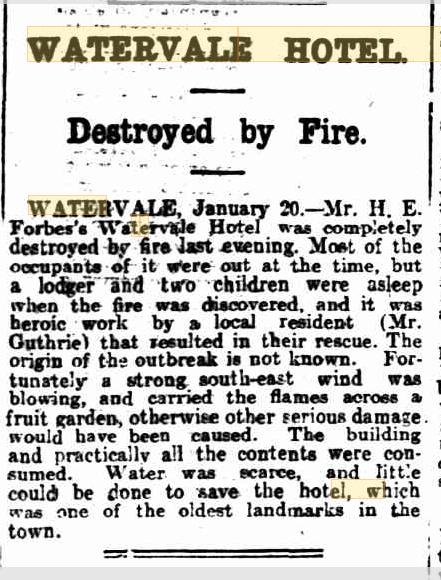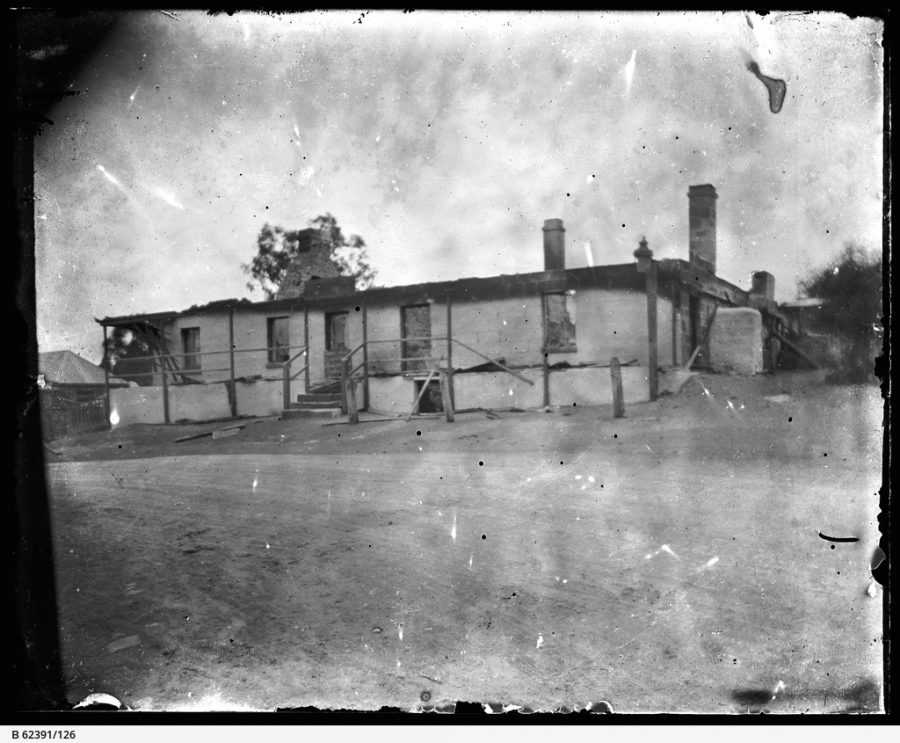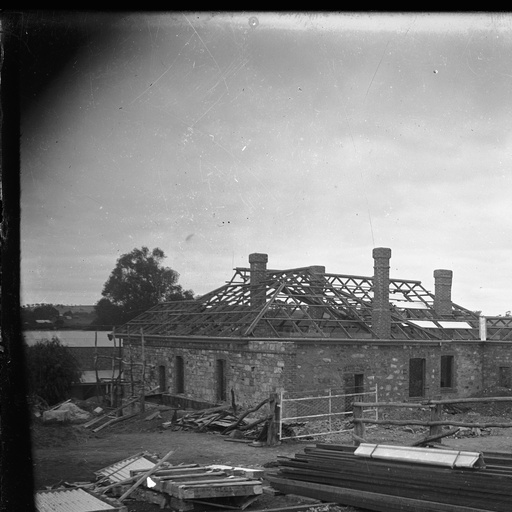Your cart is currently empty!
history


Women have been in charge of this amazing country Pub for much of her life – Esther Greenslade building its jail and changing her name to the Watervale Hotel in 1868; Helen Forbes rebuilding her into the beautiful stone building we see today after the fire of 1913; and now Nicola Palmer has directed her complete renovation, extension and re-purposing as a fine dining restaurant. It is no wonder The Watervale Hotel has such elegance and grace.
The oldest hotel in the region
We respect the past as we create our legacy for the future
The ‘Stanley Arms Inn’ was built of pine and pug coated in limestone and first licensed in 1847 by J H Bleechmore. This was only 11 years after South Australia’s proclamation, and around 8 years after John Horrocks first made his way into the Clare Valley. The County of Stanley ran from the Wakefield River in the south to Spalding in the north, and the Stanley Arms Inn was one of the first hotel in this region and now the oldest Pub in the Clare Valley tourist region still operating.
Charles Greenslade took over the Stanley Arms in 1848. During the 1850’s and 1860’s the Stanley Arms Hotel was the drinking hole for bullock drivers transporting copper from Burra to Port Wakefield, railway workers, as well as local orchardists, grazers and townspeople. It had a dubious reputation and was known for gambling on bare knuckle fights.
In 1856 a fight between Thomas Murriss and Gregory Jordan at the Hotel with some 50 on-lookers ended with Murriss’ death and his body being stored in the beer cellar until the Coroner could inspect it. Jordan was sentenced with manslaughter.
In 1863 Charles Greenslade died and his wife Esther took over the Hotel. Under her management the community meetings were held in the Hotel to petition for a Police Station to be built in Watervale. Instead a jail was built behind the Hotel in 1868 which became known as ‘The Hell Hole’. Esther and subsequent Publicans were able to lock up the drunk and disorderly prior to the arrival of constabulary unless they were fined and released before-hand. This was the same year that Francis Treloar founded Springvale Cellars which he later managed for Walter Hughes of Hughes Park. Carl Sobels was appointed Springvale winemaker and in his role as Justice of the Peace would address the offenders in the Hell Hole jail, fining them a pound if they were drunk on beer or whisky, but only 10 schillings if they were drinking local wine. Esther also re-named the Stanley Arms Inn as the ‘Watervale Hotel’ in 1868.
In 1889 Carl Sobels and his brother-in-law Herman Buring bought Springvale Winery (later to be known as Quelltaler) from the same John Richman from whom Earnest Castine bought Penobscot.
The Watervale Hotel burned down in January 1913,and was re-built from brick and stone on the original foundations by Helen Esther Forbes, licensee from 1911 to 1923.
During the Second World War the beer cellar was used for making pledges on the night before young men went to war. We have been told that four Pearce boys put a case of Champagne in the beer Cellar, with whomever was to return to share the reward. Two did.
For much of the last 170 years a succession of owners and lessees lived in the Hotel, and used the space behind as their private yard. The front bar was quite small, gentlemen using the front veranda as the passageway to the men’s toilet, whilst the ladies had their own lounge in a room behind the bar with separate entrance from North Terrace. Drinks were passed from the bar to the lounge through a serving window. The large room was used for town meetings, court cases and dining.
Only after acquisition by Warrick and Nicola in February 2018 was the entire building liberated to become public space, and the back yard leveled to become the new Kitchen and Beer Garden. The Hell Hole has been renovated as a private dining space. The walk in wine cellar has been dedicated to Carl Sobels, and features a stained glass window bearing the Quelltaler Winery logo.
Women have been in charge of this amazing country Pub for much of her life – Esther Greenslade building its jail and changing her name to the Watervale Hotel in 1868; Helen Forbes rebuilding her into the beautiful stone building we see today after the fire of 1913; and now Nicola Palmer has directed her complete renovation, extension and re-purposing as a fine dining restaurant. It is no wonder The Watervale Hotel has such elegance and grace.













Hjs Honor then passed sentence upon , the prisoners;
—Jordan twelve months* imprisonment with hard labour;
Forward to pay "a , fine to the Queen of £20, and imprisonment till the amount was paid; and Christoff to pay a fine of £10, and imprisonment til paid. -

Esther Emily Greenslades changed the name from the Stanley Arms Hotel to the Watervale Hotel. This is the same year that the 'Hell Hole' jail was built at the back of the Hotel.
The Watervale Hotel after is burnt down on January 19th 1913.

WATERVALE, January 20. -Mr. H. E. Forbes 'Watervale Hotel' was completely destroyed by fire last evening. Most of the occupants of it were out at the time, but a lodger and two children were asleep when the fire was discovered, and it was heroic work by a local resident (Mr Guthrie) that resulted in their rescue. The origin of the outbreak is not known. Fortunatly a strong south-east wind was blowing, and carried the flames across a fruit garden, otherwise other serious damage would have been caused. The building and practically all the contents were consumed. Water was scarce and little could be done to save the hotel, which was one of the oldest landmarks in the town.
WATERVALE, January 20. -Mr. H. E. Forbes 'Watervale Hotel' was completely destroyed by fire last evening. Most of the occupants of it were out at the time, but a lodger and two children were asleep when the fire was discovered, and it was heroic work by a local resident (Mr Guthrie) that resulted in their rescue. The origin of the outbreak is not known. Fortunatly a strong south-east wind was blowing, and carried the flames across a fruit garden, otherwise other serious damage would have been caused. The building and practically all the contents were consumed. Water was scarce and little could be done to save the hotel, which was one of the oldest landmarks in the town.













